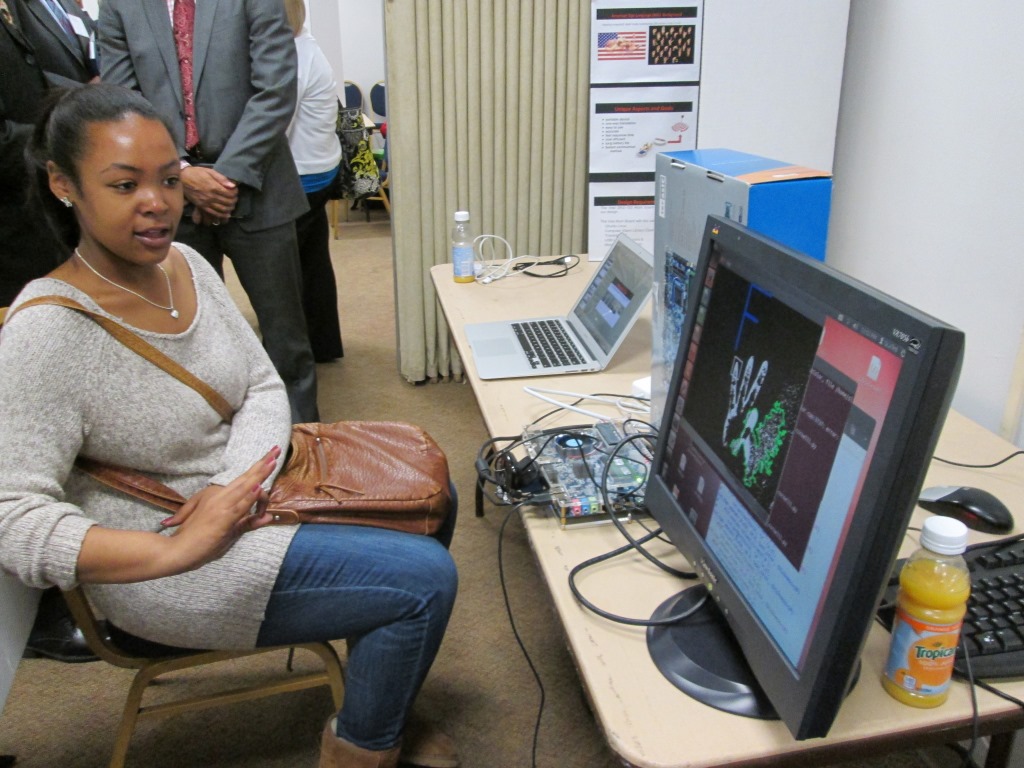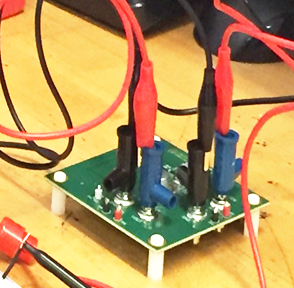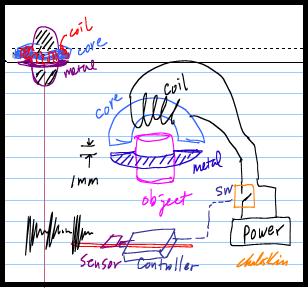
VIP Program at Howard University
Howard University
Washington, DC 20059
Coordinator: Dr. Charles Kim (CKIM@HOWARD.EDU)
This program is sponsored by The Leona M. and Harry B. Helmsley Charitable Trust as part of VIP Consortium Project (lead institution - Georgia Tech) to drive systemic reform of STEM education.
* How to Join?: If you want to join one of the teams below, contact (email) the Contact Person of the team. Any question can be directed to the VIP coordinator at ckim@howard.edu. Anyone, yeah anyone, can join.
Requirements for VIP Participants
| Requirements | Resources |
| 1. Weekly
Team Meeting Participation & Meeting Records 2. Participation in Semester-End Team Presentation (last week of the semester) 3. Submission of Survey (last week of each semester) 4. Submission of 1-minute video (or audio) clip of Elevator Pitch (Last week of the semester) |
* VIP
Weekly Meeting
Recording Form * VIP Survey Form (WORD format & PDF format) * Elevator Pitch & How to Prepare for it? * VIP Presentation Tips |
HOWARD VIP Teams (2016-2017) LINK to 2015-2016, 2017-2018 Academic Year
| Project Team | Advisor | Contact | Project Description | Project Website |
| SLatE8 | Dr. Mohamed Chouikha (EE) | Vanessa Galani (Graduate Assistant) and Jason Rogers (CpE) | Sign Language
to English |
www.VIPatSlate8.html |
| Intruder | Dr. Hassan Salmani (CpE) | Jonathan Goberdhan (EE) | Hardware
Trojan Detection & Prevention for Health-Care Computer Systems |
www.VIPatIntruder.html |
| Wireless Sensor Network | Dr. Hassan Salmani (CpE) | Anthony Brandon(CpE) | Wireless sensor network development for temperature sensing | |
| HU Radio Telescope - Measuring the Galactic Rotation Curve | Dr. Marcus Alfred (PHYS): | Dr. Marcus Alfred (PHYS) | This project
will build a Radio Telescope following the MIT Haystack Radio Telescope
which was later extensively modified, and presently working, University
of Michigan version. EE, CpE, CS students for electronics, and ME
and CV students for machining, and other students from PHYS can
experience a great deal about this observational astronomy. |
VIPatHUscope.html |
| Terminator Arm - "Creating an Inexpensive Prosthetic Arm controllable by Brain" | Dr. Charles Kim (EE) |
Chidi Ekeocha(Graduate
Assistant) and Cory Bethrant(Team Leader) |
Project 1:This project aims to create and build inexpensive prosthetics by 3-D
printing which can be controlled by actions signals from the brain. Project 2: Drone Control by Brain (Myo arm band actually): A spin-off project which uses the same Myo band to command a drone to take-off, fly at an altitude, and land. And more. |
www.VIPatProsthetics3.html |
| DOPES - "Diagnosis of Power Electronic Systems" | Dr. Charles Kim (EE) | Ayotunde Odejayi(Graduate Assistant) | This project
aims to build an Reliability Diagnosis System, using IR temperature and
GMR current sensors, for Power Electronics Systems which are popularly
used in mobile platforms such as aircraft, electric vehicles, and
off-road high power vehicles.
|
|
| Seismolator - "Building a magnetic levitation platform as an ideal seismic isolator" | Dr. Claudia Marin (CV); Technical Advisor - Dr. Charles Kim (EE) | Sola Famakin (Graduate Assistant) and Mehdi Rezaee | Commonly used
seismic isolators at the base of buildings try to disconnect the
buildings from the ground to limit the transmission of damaging effects
of earthquakes to the building like hanging the structure on the air.
The link (LINK)
compares the responses of a seismically isolated and a non-isolated building.
An ideal seismic isolator will keep the isolated object floating on the air to avoid contact with the shaking ground, then the isolated body won't experience the dynamic effects of the earthquake. The mission of this project is to build a prototype magnetic levitation system to float an object of 1 lb weight to isolate it from a shake.  |
www.VIPatSeismo.html |
| Thru-Wall - "Seeing Through-Wall using Software Defined Devices" | Dr. Danda Rawat (CS) | Dr. Danda Rawat (CS) | This project aims to develop methods to detect reflected signals for seeing through-wall. This project, if successful, could help to find/detect/see somebody in the closed room without seeing the person physically (e.g., trapped person detection inside a collapsed building, active shooter inside a closed room/building, cancer tumor detection, elderly monitoring, etc). Interested student should contact the contact person listed. | |
| Autonomous Car - "Resilient Autonomous/self-Driving Cars: A prototype" | Dr. Danda Rawat (CS) | Dr. Danda Rawat (CS) | This project aims to develop light weight cybersecurity schemes, privacy aware communications, adaptive speed control, automatic braking, rerouting, information sharing using wireless access technologies and display vehicle's status information. | |
| CARS - "Cars Assuring Resilient Security" | Dr. Gedare Bloom (CS) | Habeeb Olufowobi (Graduate Assistant) |
This project investigates security protocols and mechanisms that
maintain safe operations for network-connected and autonomous automotive
vehicles. In particular, we propose a fail operational intrusion
detection system (FO-IDS) for vehicle networks. for vehicle networks that will consist of 2 main parts. 1) an
intrusion detection system, which can detect if an attack is performed
over the CAN network 2) a mechanism that transitions the system into a
fail-safe state in which critical function remain operational. |
|
| DESPITE - "Despite Exploits, Security via Provenance for IoT Endpoints" | Dr. Gedare Bloom (CS) | Ebelechukwu Nwafor (Graduate Assistant | This project investigates security for Internet of Things (IoT) applications by analyzing and mitigating exploitable vulnerabilities in the embedded systems used to monitor and control the Things. | |
| Diamond Sensors - "Diamond Window Pressure and Temperature Sensors" | Dr. James Hammonds (ME) | Rasheed Yinusa (Graduate Assistant) |
This
project aims to build diamond film temperature and pressure sensors, and to measure
Young’s modulus and the thermal conductivity of diamond
films supported by silicon and amorphous silica substrates. Suspended flexible
diamond films supported by silicon and silica will be made using modern
micro-fabrication techniques. Optical fibers, a light source, and detector will
be integrated within the diamond film structure. The structure will be immersed
in a variable pressure field (constant temperature), and the Young’s modulus
will be extracted by measuring the displacement of the diamond film using the
optical system. The temperature of the structure will also be changed, and film
displacement relative to temperature changes (constant pressure) will be
measured. Finally, in-plane and cross-plane thermal conductivity of the
suspended diamond films will also be measured. The results of this work will not
only lead to the development of thermal circuit components, but also to
nanoscale infrared sensors for biomedical applications. Detailed project description is found here. |
|
| Smart Home | Dr. James Momoh (EE) | Ernest Legier (CpE, Sr), Shravan Tomar (Graduate Assistant) |
The smart home is an
environment in which residents are able to operate most, if not all,
home appliances with smart devices.
For this project, the group would like to build a smart house
that contains multiple household electrical devices which will be
networked together and controlled by a smart switching system. The
ultimate goal will be to design, build and simulate a system for a smart
home. The main feature of
this project is device communication across a network.
As long as a user is connected to the network, he or she will
have access to all permissible appliances as well as the statuses of
these appliances; this includes the ability to observe if the given
appliance is powered on, how much power it is consuming, and the running
time the device has been operating.
This system must also be able to prevent intruders from hacking
the smart home from the outside; the smart must be able to recognize
residents from nonresidents. |